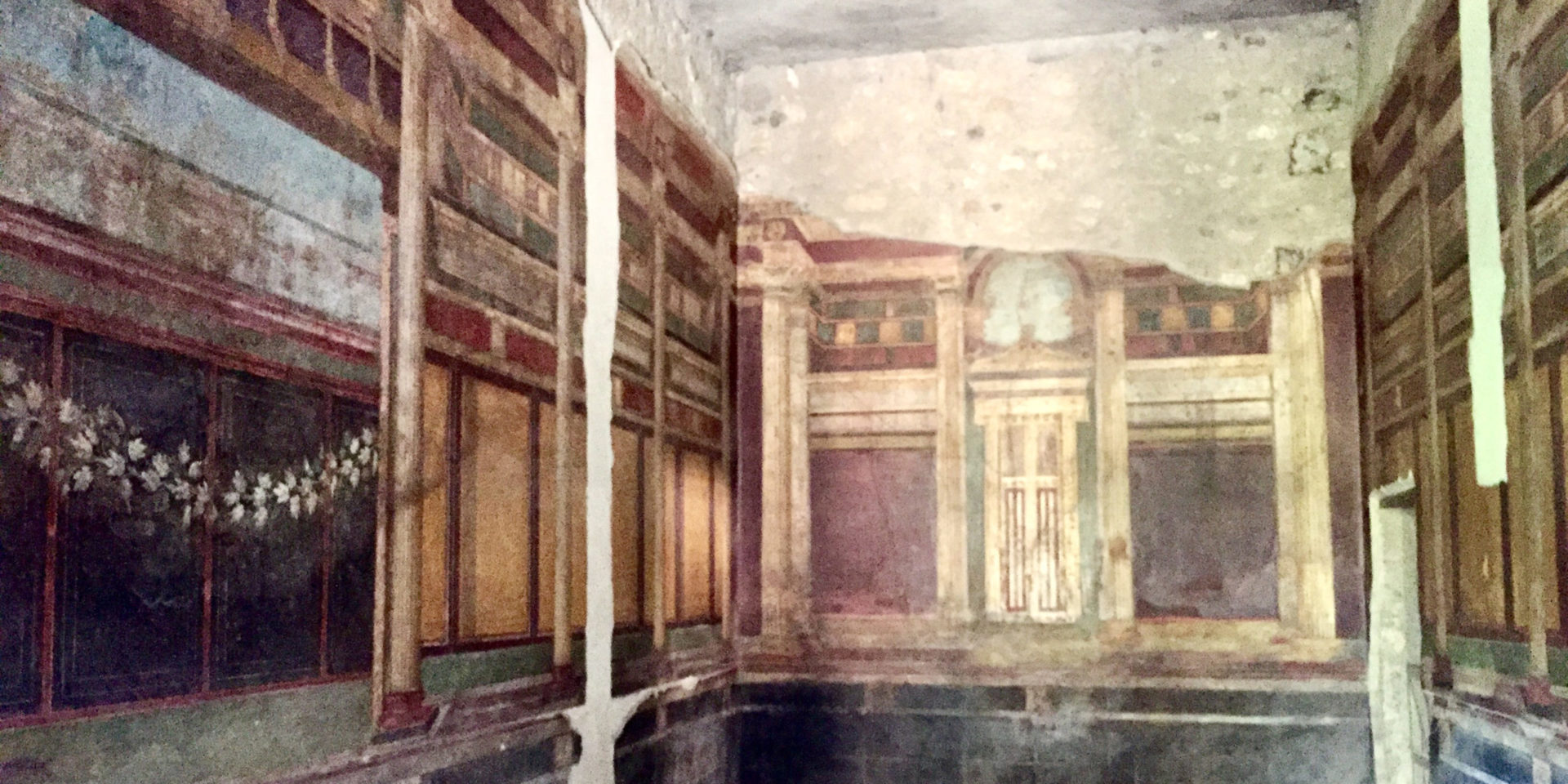ONE-MA3 – Day XIII: Roman Roads, Ruins, and Relaxation
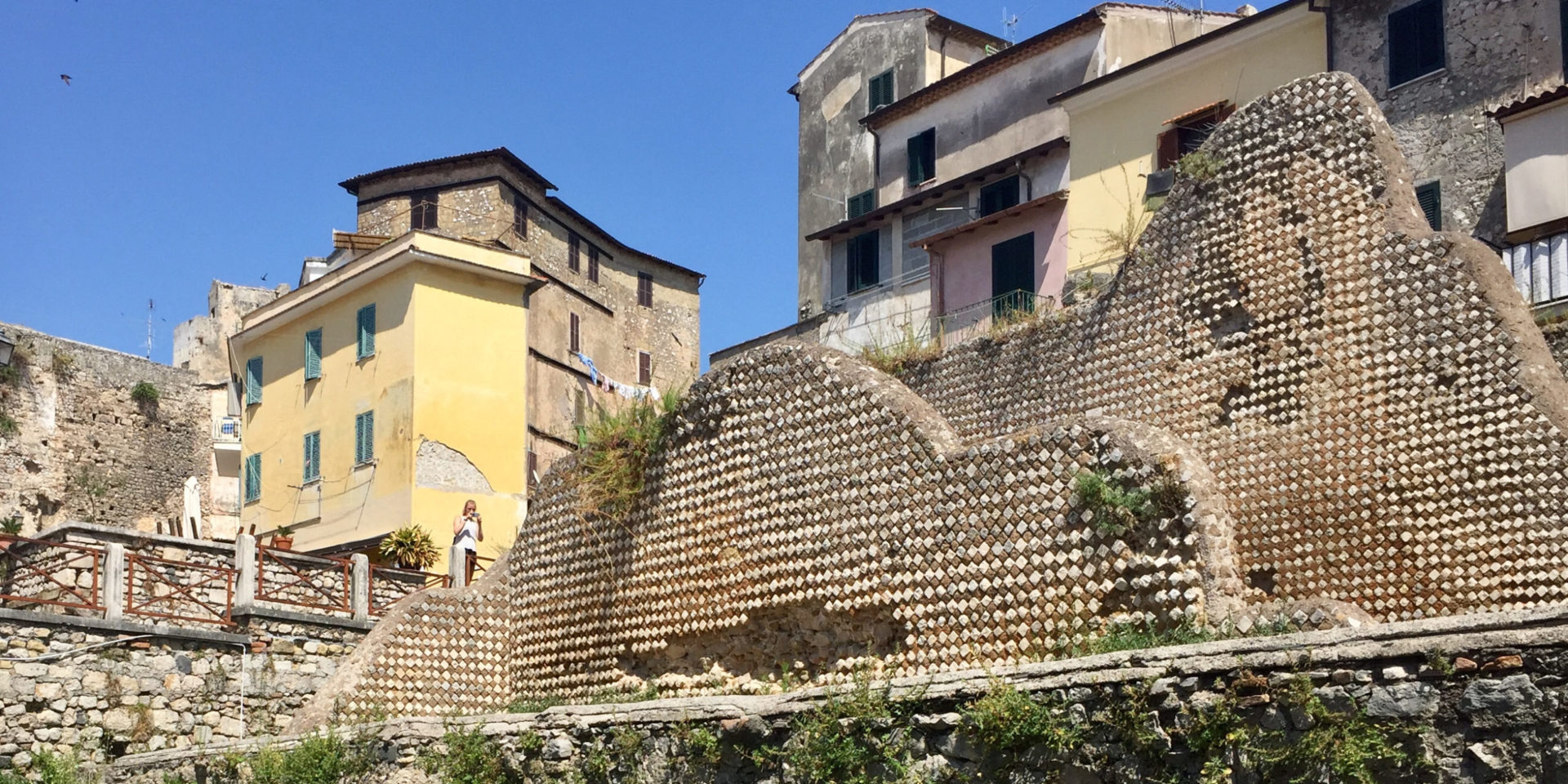
By Sophia Mittman ’22
Overall, our trip in Terracina is a short one. Today was the only full day we’ll have spent here, but it was jam-packed full of exciting archeological field work. In our four groups of four, we divided and conquered the day’s projects, including taking infra-red pictures of restored mosaics in search of the invisible pigment Egyptian blue, completing photogrammetry on the ruins of a temple, reconstructing Roman roads, and finally doing more photogrammetry and X-ray fluorescence (XRF) on statues within the local archeological museum.
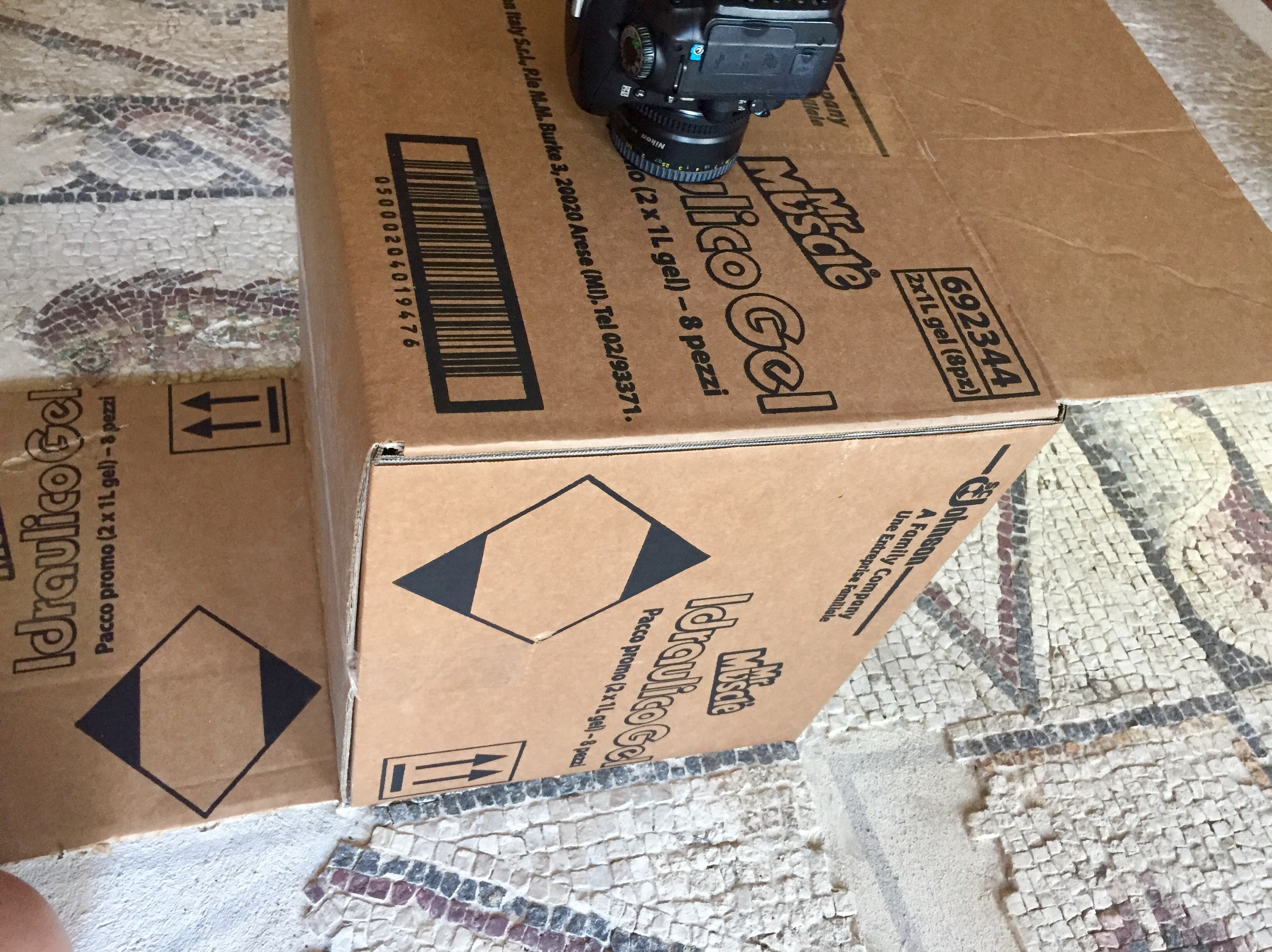
Our make-shift darkroom in the search for Egyptian blue!
For the mosaics, my group was the first to attempt finding hidden traces of Egyptian blue on the tesserae. Our task was to take photos at various locations on the mosaic using a camera that could take in the entire spectrum of wavelengths but filtered out only infrared rays. The only dilemma was that we needed to take infrared pictures of the mosaic using LED lights but without exposing it to any sunlight because the infrared rays from the sun would interfere with the clarity of our photos (and sunlight was spilling all over the mosaic thanks to the large windows of the building). So, with a cardboard box found from the store next door, a pair of old scissors, and a camera lens cap used as a stencil, we cut out one side of the box and a small circular hole in the opposite side. By doing so, we created a mini dark-room safe from sunlight that we could place directly on top of the ground mosaic, shine an iPhone LED light into, and take pictures through the circular hole on top. Moving the box a width of six pieces of tesserae at a time, we tried to scrutinize the segments covered in pictures of fish in hopes that Egyptian blue may have been used there, but sadly did not discover any traces of the invisible pigment. I cannot wait until we get to see the real Egyptian blue with its luminescent properties in Aramengo and Turin!

Example of a restored Roman road: the Via Appia
Back in elementary school, I remember learning about the creation Roman roads, but today we got to do more than just read about them from a paper textbook. In the second station we got to examine, sketch, and model the Via Appia that runs through Terracina (the first Roman road ever built). We took note of the large, old stones with rounded edges that fit nicely together in a gentle arc across the road, while also noticing the sections of restored road where the stones were newer as evident based on their flat surfaces, lighter color, and sharply-cut edges and corners. Even though much of the Roman road was restored, some areas contained the original stones that we were able to walk on. I was amazed by the fact that so many aspects of these two-thousand year-old Roman roads are still evident in our modern roads today, such as the gentle taper across the width of the road to allow for drainage, the creation of sidewalks along the side of the road, and generally having the form of straight paths to make transportation quicker from one point to another across a country.
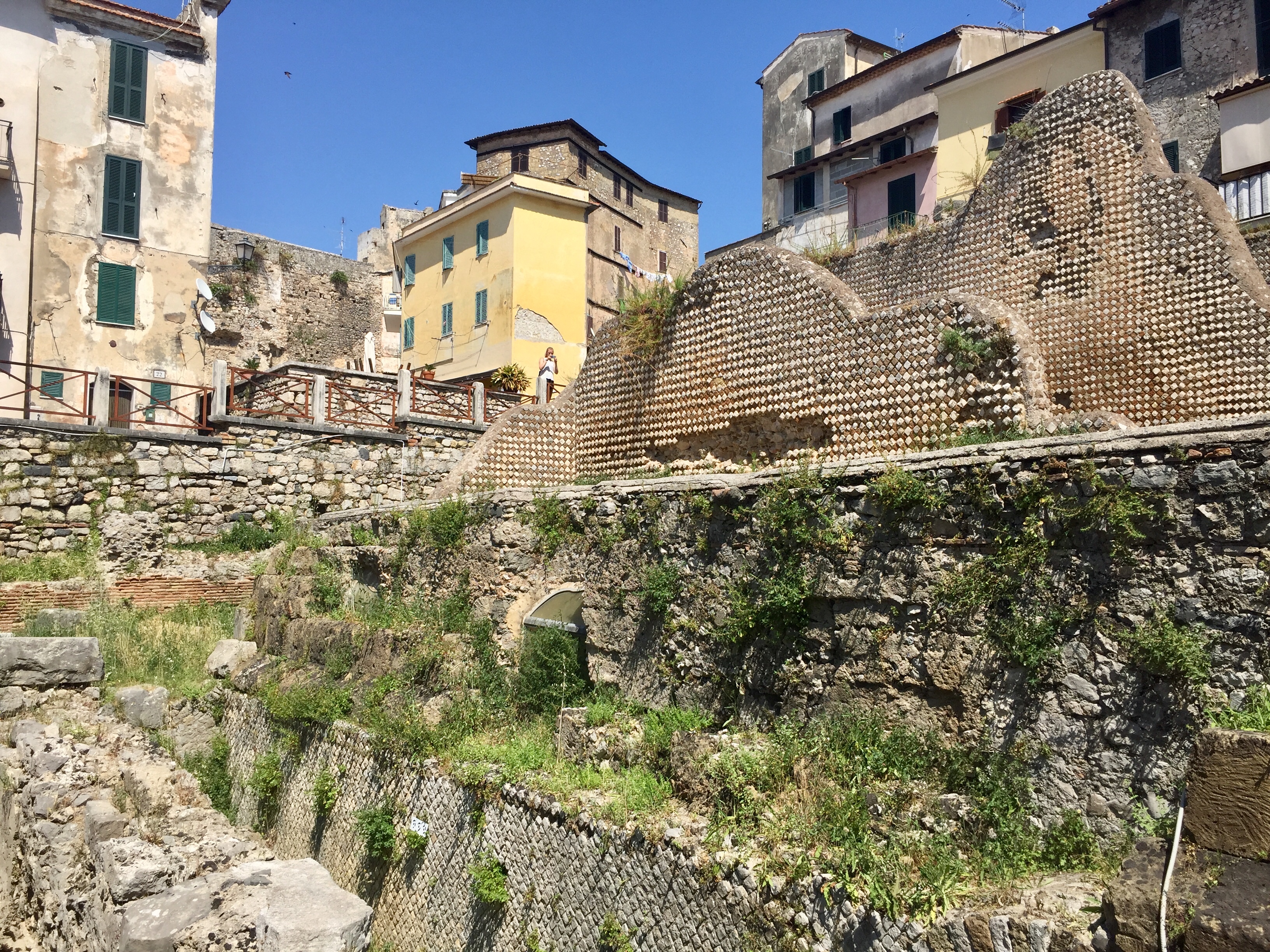
One of our photogrammetry photos of the temple in Terracina
After our exploration of Roman roads, we took photos of one of the temple ruins in the city so that we can model the entire structure using photogrammetry later on and then continued to the archeological museum that we had visited the day before to practice even more photogrammetry on the marble statues there. Additionally, we did XRF on some red pigments found on those statues and discovered that the red pigments used at that time contained lead (a material that was also used to make pipes around that time). Each time we learn a small tid-bit about pigments is going to help us when we dive into pigment chemistry in the next week. Finally, we enjoyed our last beach day of the trip, relaxing in the cool Mediterranean, chatting away, and making spherical sand castles.
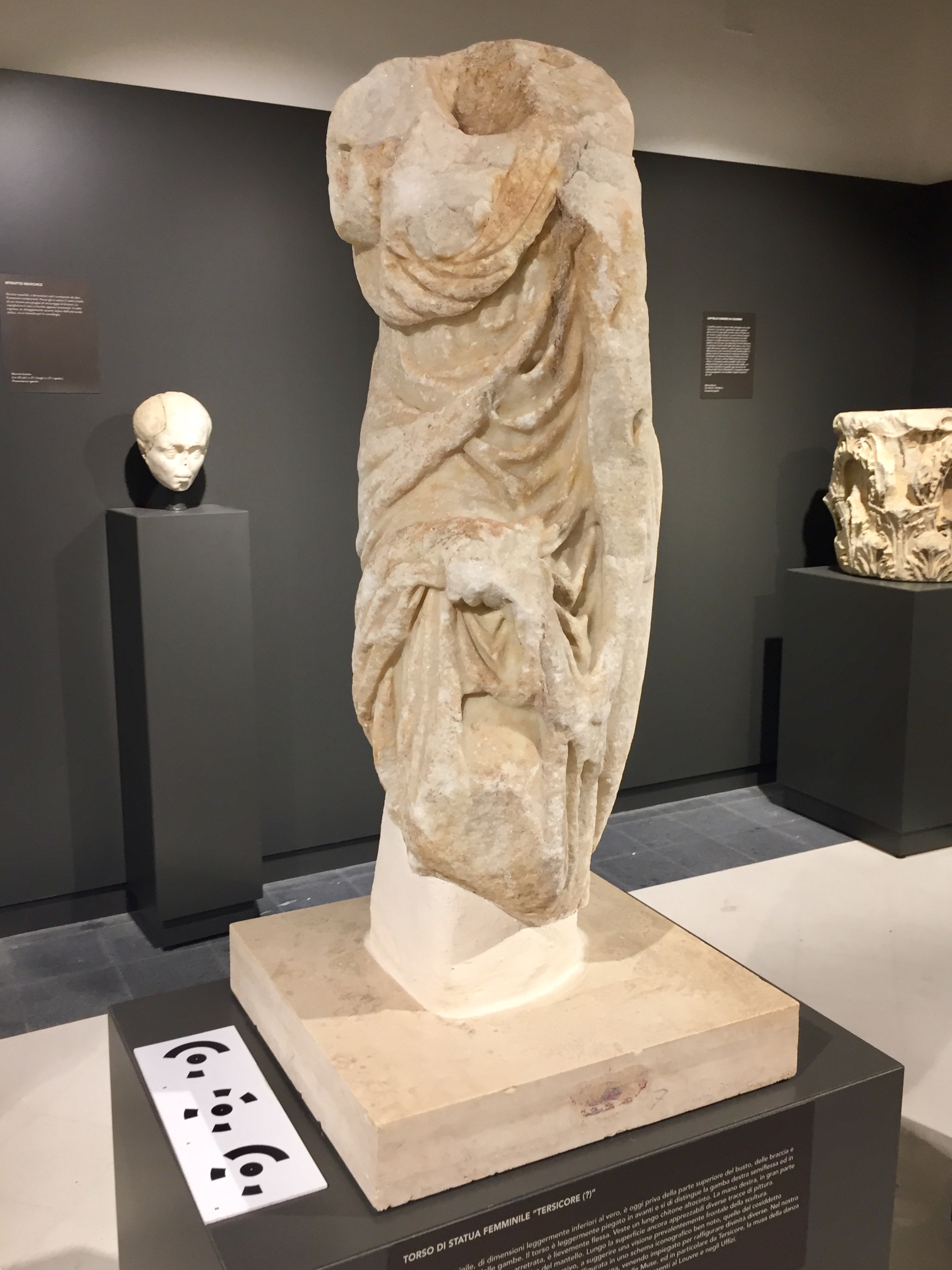
Doing photogrammetry on the museum’s statues
Share on Bluesky

